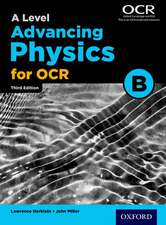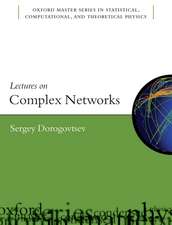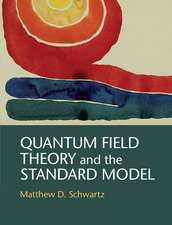Turbulent Motion and the Structure of Chaos: A New Approach to the Statistical Theory of Open Systems: Fundamental Theories of Physics, cartea 42
Autor Yu.L. Klimontovichen Limba Engleză Hardback – 30 sep 1991
| Toate formatele și edițiile | Preț | Express |
|---|---|---|
| Paperback (1) | 1222.49 lei 6-8 săpt. | |
| SPRINGER NETHERLANDS – 27 sep 2012 | 1222.49 lei 6-8 săpt. | |
| Hardback (1) | 1229.40 lei 6-8 săpt. | |
| SPRINGER NETHERLANDS – 30 sep 1991 | 1229.40 lei 6-8 săpt. |
Din seria Fundamental Theories of Physics
- 20%
 Preț: 1002.39 lei
Preț: 1002.39 lei -
 Preț: 426.56 lei
Preț: 426.56 lei - 20%
 Preț: 819.51 lei
Preț: 819.51 lei - 18%
 Preț: 779.26 lei
Preț: 779.26 lei - 18%
 Preț: 955.25 lei
Preț: 955.25 lei - 18%
 Preț: 950.52 lei
Preț: 950.52 lei - 24%
 Preț: 794.91 lei
Preț: 794.91 lei - 18%
 Preț: 948.47 lei
Preț: 948.47 lei - 15%
 Preț: 589.80 lei
Preț: 589.80 lei - 18%
 Preț: 1229.73 lei
Preț: 1229.73 lei - 15%
 Preț: 587.83 lei
Preț: 587.83 lei - 18%
 Preț: 1236.06 lei
Preț: 1236.06 lei - 18%
 Preț: 946.87 lei
Preț: 946.87 lei -
 Preț: 394.87 lei
Preț: 394.87 lei - 18%
 Preț: 954.93 lei
Preț: 954.93 lei - 18%
 Preț: 1241.10 lei
Preț: 1241.10 lei - 18%
 Preț: 954.93 lei
Preț: 954.93 lei - 18%
 Preț: 953.35 lei
Preț: 953.35 lei - 18%
 Preț: 948.92 lei
Preț: 948.92 lei - 15%
 Preț: 648.05 lei
Preț: 648.05 lei - 18%
 Preț: 1232.09 lei
Preț: 1232.09 lei - 18%
 Preț: 996.78 lei
Preț: 996.78 lei - 18%
 Preț: 946.41 lei
Preț: 946.41 lei - 15%
 Preț: 640.24 lei
Preț: 640.24 lei - 15%
 Preț: 636.80 lei
Preț: 636.80 lei -
 Preț: 391.79 lei
Preț: 391.79 lei - 18%
 Preț: 780.19 lei
Preț: 780.19 lei -
 Preț: 391.79 lei
Preț: 391.79 lei - 15%
 Preț: 649.06 lei
Preț: 649.06 lei -
 Preț: 397.76 lei
Preț: 397.76 lei - 24%
 Preț: 586.71 lei
Preț: 586.71 lei - 15%
 Preț: 644.95 lei
Preț: 644.95 lei - 18%
 Preț: 1228.15 lei
Preț: 1228.15 lei
Preț: 1229.40 lei
Preț vechi: 1499.27 lei
-18% Nou
Puncte Express: 1844
Preț estimativ în valută:
235.25€ • 251.56$ • 196.14£
235.25€ • 251.56$ • 196.14£
Carte tipărită la comandă
Livrare economică 18 aprilie-02 mai
Preluare comenzi: 021 569.72.76
Specificații
ISBN-13: 9780792311140
ISBN-10: 0792311140
Pagini: 401
Ilustrații: XI, 401 p.
Dimensiuni: 155 x 235 x 29 mm
Greutate: 0.78 kg
Ediția:1991
Editura: SPRINGER NETHERLANDS
Colecția Springer
Seria Fundamental Theories of Physics
Locul publicării:Dordrecht, Netherlands
ISBN-10: 0792311140
Pagini: 401
Ilustrații: XI, 401 p.
Dimensiuni: 155 x 235 x 29 mm
Greutate: 0.78 kg
Ediția:1991
Editura: SPRINGER NETHERLANDS
Colecția Springer
Seria Fundamental Theories of Physics
Locul publicării:Dordrecht, Netherlands
Public țintă
ResearchCuprins
I.1. The Criteria of the Relative Degree of Order of the States of Open Systems.- I.2. Connection Between the Statistical and the Dynamic Descriptions of Motions in Macroscopic Open Systems. The Constructive Role of Dynamic Instability of Motion.- I.3. The Transition from Reversible to Irreversible Equations. The Gibbs Ensemble in the Statistical Theory of Nonequilibrium Processes.- I.4. The Role of Fluctuations at Different Levels of Description. Fluctuation Dissipation Relations.- I.5. Brownian Motion in Open Systems. Molecular and Turbulent Sources of Fluctuations.- I.6. Laminar and Turbulent Motion.- 1. Evolution of Entropy and Entropy Production in Open Systems.- 1.1. Chaos and Order. The Controlling Parameters. Physical Chaos. Evolution and Self-Organization in Open systems.- 1.2. Boltzmann-Shannon-Gibbs Entropy.- 1.3. Entropy Distribution Function.- 1.4. The Gibbs Ensemble. Smoothing over the Physically Infinitesimal Volume. Entropy Including Fluctuations. Space (Time) and Phase Averages. Local Ergodicity Condition.- 1.5. The Kinetic Boltzmann Equation for Statistical and Smoothed Distribuions. Physically Infinitesimal Scales. The Constructive Role of the Dynamic Instability of Motion of Atoms in a Gas.- 1.6. The Role of Nonequilibrium Fluctuations in a Boltzmann Gas. Molecular and Turbulent Sources of Fluctuations.- 1.7. The Kinetic Equations for the N-Particle Distribution Functions. The Leontovich Equation.- 1.8. Boltzmann’s H-Theorem for Smoothed (Pulsating) and Deterministic Distributions.- 1.9. Entropy and Entropy Production for Smoothed and Deterministic Distributions.- 1.10. The Gibbs’ Theorem.- 1.11. H-Theorem for Open Systems. Kulback Entropy.- 1.12. Evolution in the Space of Controlling Parameters. The S-Theorem.- 1.13. The S-Theorem. LocalFormulation.- 1.14. The Comparison of the Relative Degree of Order of States on the Basis of the S-Theorem Using Experimental Data.- 1.15. Dynamic and Statistical Descriptions of Complex Motions. K-Entropy, Lyapunov Indices. Nonlinear Characteristics of the Trajectory Divergence.- 1.16. Criteria of Dynamic Instability of Motion in Statistical Theory.- 1.17. Entropy as Measure of Diversity in Biological Evolution.- 1.18. The Principle of Minimum Entropy Production in Self-Organization Processes.- 2. Transition From the Reversible Equations of Mechanics to the Irreversible Equations of the Statistical Theory.- 2.1. Two Types of Reversible Processes. Symmetry Properties of Distribution Functions.- 2.2. Liouville Equation and Vlasov Equation. The First Moments and the “Collisionless” Approximations.- 2.3. Reversible Equations in Quantum Statistical Theory.- 2.4. Two Types of Dissipative Kinetic Equations for N-Particle Distributions.- 2.5. Measure of Deficiency (Incompleteness) of the Statistical Description.- 2.6. The Hierarchy of Equations of Fluid Mechanics.- 3. Fluctuation Dissipation Relations.- 3.1. Examples of Fluctuation Dissipation Relations.- 3.2. FDR for N-Particle Distribution Functions.- 3.3. Thermodynamic Form of the FDR. The Callen-Welton Formula.- 3.4. FDR for a Boltzmann gas. The Fluctuative Representation of Boltzmann Collision Integral.- 3.5. FDR for Large-Scale (Kinetic) Fluctuations.- 3.6. Examples of FDR for Large-Scale Fluctuations.- 3.7. System of Quantum Atoms Oscillators.- 3.8. Fluctuation Dissipation Relations in Hydrodynamics.- 3.9. Two Ways of Defining Kinetic Coefficients.- 3.10. The Molecular Langevin Source in the Difffusion Equation.- 3.11. Connection between the Intensities of Langevin Sources and the Correlator of of Phase DensityFluctuations.- 3.12. Natural Flicker Noise (“1/f Noise”). FDR for Flicker Noise.- 3.13. Natural Flicker Noise and Superconductivity.- 4. Brownian Motion.- 4.1. Fokker-Planck and Langevin Equations.- 4.2. Three Definitions of the Langevin and Fokker-Planck Equations.- 4.3. The Fokker-Planck Equations in the Statistical Theory of Nonequilibrium Processes.- 4.4. Transition to the Fokker-Planck Equation from the Smoluchowski equation (the Chapman-Kolmogorov Equation) and from the Master Equation.- 4.5. Langevin.Sources in Kinetic Equations.- 4.6. Langevin Sources in Fokker-Planck and Einstein-Smoluchowski Equations.- 4.7. Turbulent Langevin Sources and Fluctuation Dissipation Relations in Hydrodynamics.- 4.8. Brownian Motion in Systems with a Variable Number of Particles..- 5. The Boltzmann-Gibbs-Shannon Entropy As Measure of the Relative Degree of Order in Open Systems.- 5.1. Van der Pol Generator.- 5.2. Generator with Inertial Nonlinearity.- 5.3. Invariant Measures. Examples of Gibbs Distributions for Open Systems.- 5.4. Generalized Van Der Pol Generators. Bifurcations of the Limiting Cycle Energy and the Period of Oscillations.- 5.5. Dynamic and Statistical Distributions.- 5.6. Comparison Between the Degrees of Order in the Bifurcation Points and in the State of Dynamic Chaos.- 5.7. Evolution of Entropy in Systems with Two Controlling Parameters.- 5.8. A Medium of Linked Generators. The Kinetic Approach in the Theory of Self-Organization.- 5.9. A System of Van der Pol Generators with Common Feedback. Associative Memory and Pattern Recognition.- 5.10. Kinetic Description of Chemically Reacting Systems.- 5.11. A Medium of Bistable Elements. The Kinetic Approach in the Theory of Phase Transitions.- 6. Turbulent Motion. The Structure of Chaos.- 6.1. CharacteristicFeatures of Turbulent Motion. The Main Problems.- 6.2. Incompressible Fluid. Reynolds Equations. Reynolds Stresses.- 6.3. Well-Developed Turbulence. Turbulent Viscosity.- 6.4. Semiempirical Prandtl-Karman Theory of Turbulence.- 6.5. Onset of Turbulence in Steady Couette and Poiseuille Flows.- 6.6. Entropy Production in Laminar and Turbulent Flows.- 6.7. The Principle of Least Dissipation and the Principle of Minimum Entropy Production in Self-Organization Processes.- 6.8. Evolution of Entropy in the Transition from Laminar to Turbulent Flow.- 6.9. Kinetic Description of Hydrodynamic Motion.- Conclusion.- References.

















